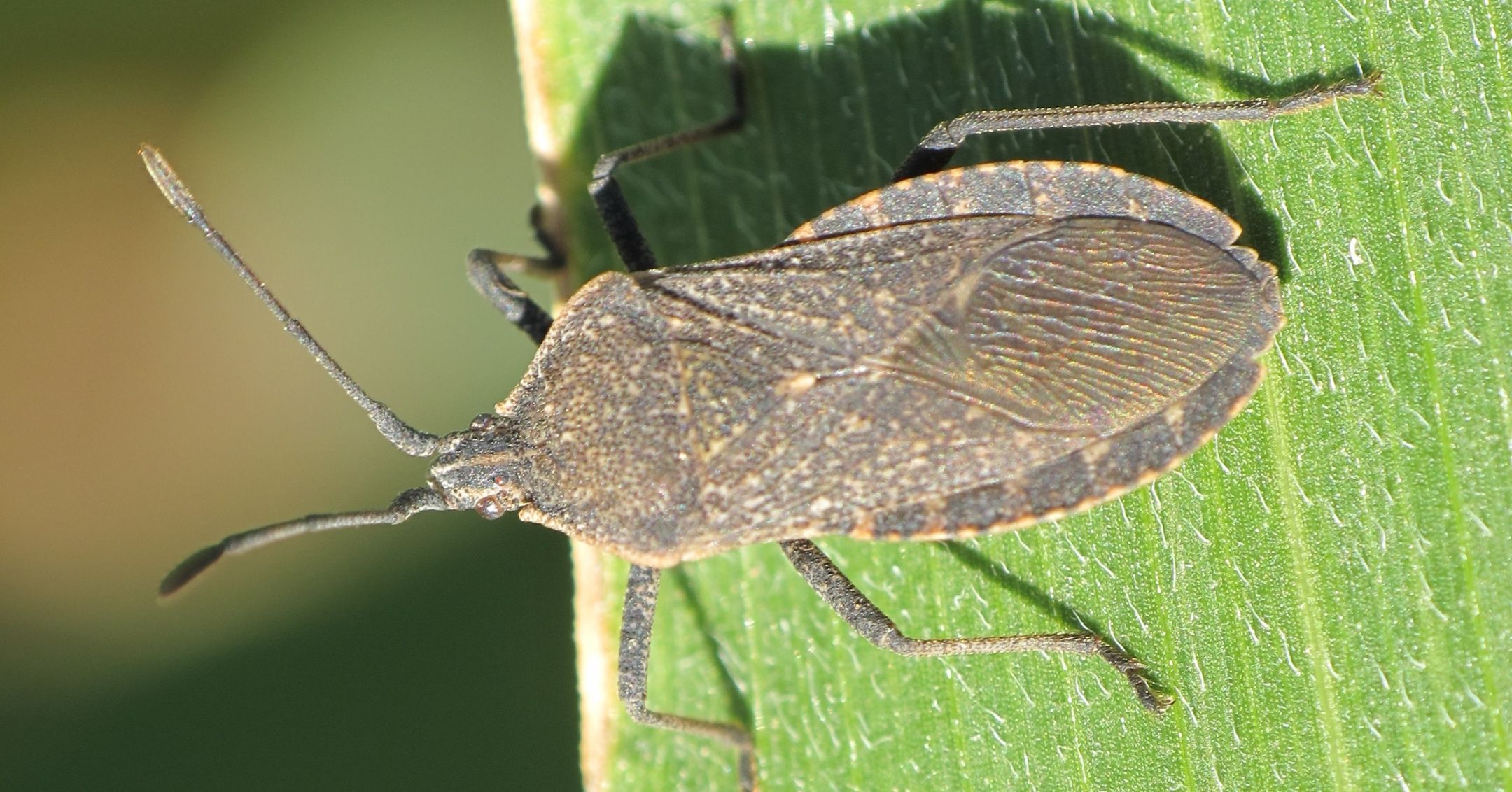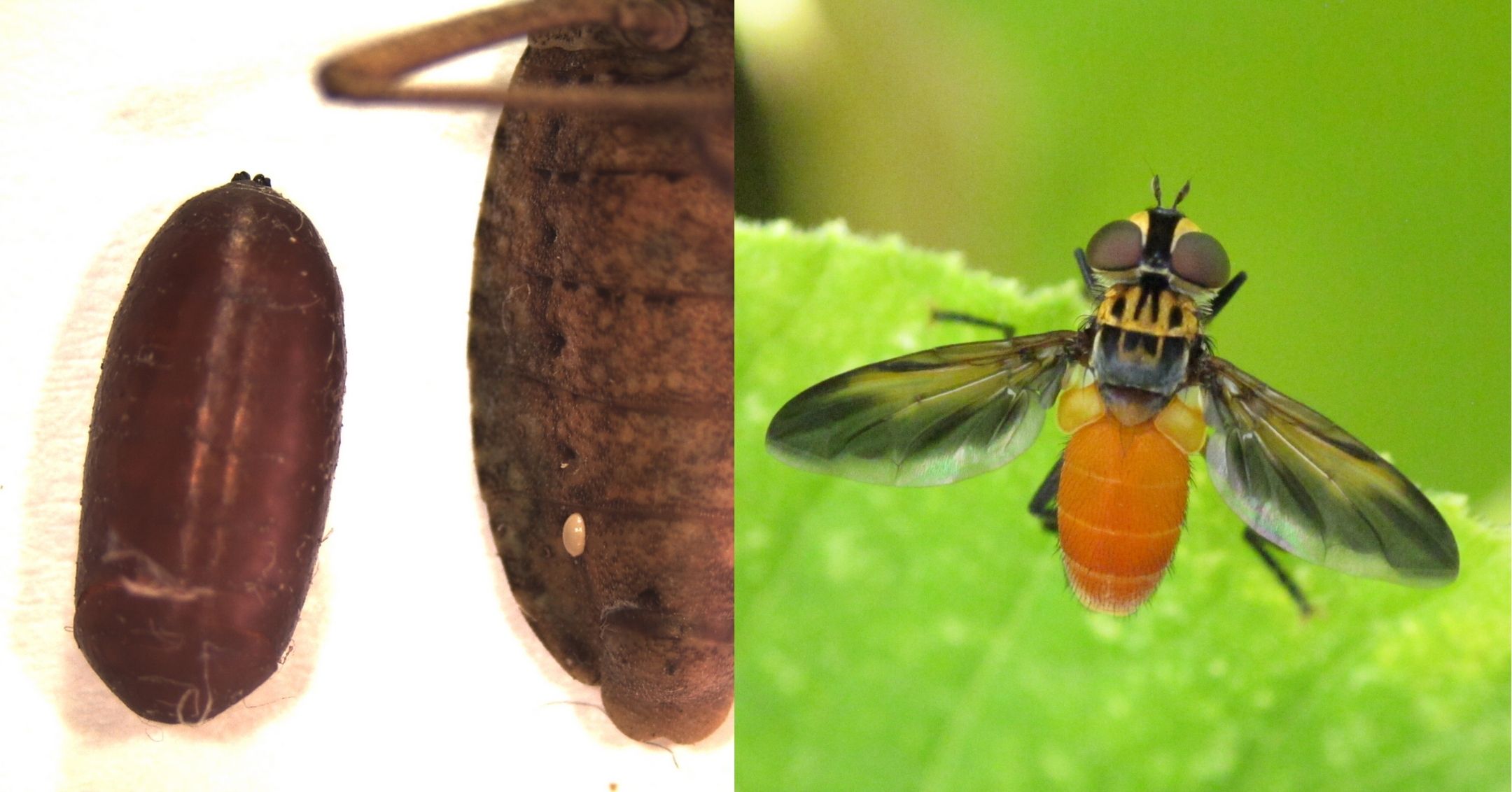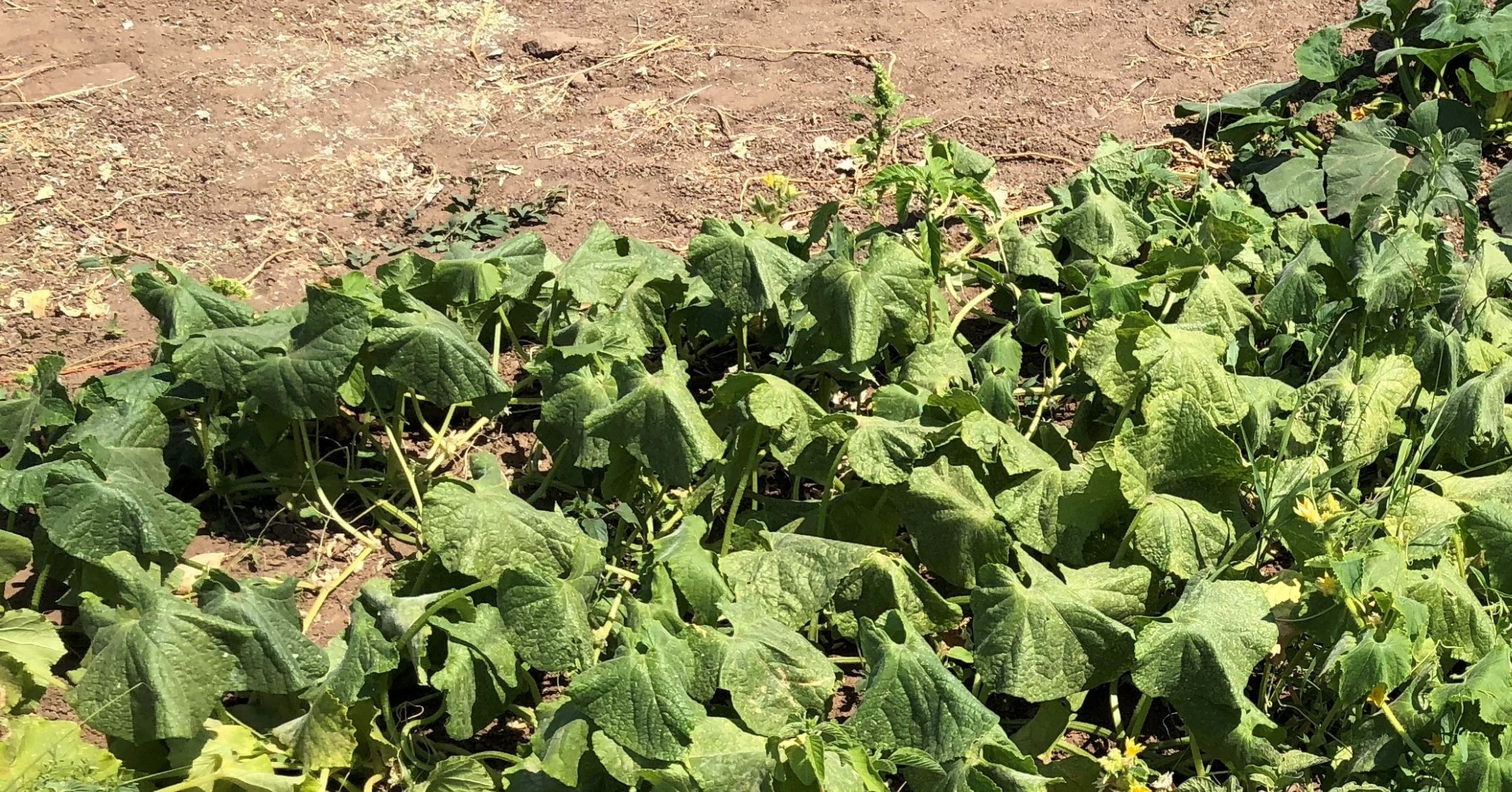Squash Bug




Description
Adult: About 5/8 inch long and about one-third as wide. Wings are folded over a flat back, and the body is brown to gray with orange and brown stripes along the edges of the abdomen and underside.
Egg: Clusters of 15 to 40, shiny bronze to red eggs located on the undersides of leaves starting in midspring.
Nymph: Five instars ranging from 3/16 to ½ inch long. The 1st instar has a red head, antennae and legs with whitish to greenish gray bodies. The 2nd and 3rd instars have black appendages and greenish gray bodies. The 4th and 5th instars develop wing pads and begin to resemble adults.
Life History
Squash bugs overwinter as adults outdoors in protected sites. In southern Utah, they usually emerge in April, and in northern Utah they generally emerge in May. After emerging, adults will fly to host plants to feed, mate, and lay eggs. The new generation of adults show up in June to July in northern Utah and 3 to 4 weeks earlier in southern Utah. There is one generation per year in northern Utah and a partial second generation is possible in southern Utah.
Damage
Injury occurs on the leaves, vines, and fruits of cucurbit plants. Squash bugs feed with piercingsucking mouthparts, which results in speckled leaves that lose nutrients and eventually turn yellow and then brown. Heavy feeding along leaf and plant stems causes wilting. Feeding on fruits can cause scars and death of young fruit and sunken areas that reduce marketability. Fruit feeding can also increase the chance of fruit rot during storage.
Susceptible host plants include all cucurbits, but pumpkin and squash are the most attractive.
Monitoring
Monitor in the spring for squash bug adults under plant debris, perennial plants, or near buildings. Look daily for eggs under leaves and watch for plant wilt. Place wooden boards in susceptible areas. Lift them up every morning and destroy existing eggs and adults.
Management
Cabbage aphids can overwinter as eggs on Brussels sprouts, cabbage, and kale. It is important to thoroughly destroy host plant debris through tillage and/or rouging.
Cultural
- Sanitation. Remove or till under plant debris at the end of the season and keep fields free of trash or wood that could provide overwintering sites.
- Hand-picking. Physically remove adults and nymphs by hand. Kill/remove egg clusters by squashing, tearing out the leaf section, covering in petroleum jelly, or using duct or packaging tape to “peel” them off. Begin physical removal early in the season and continue every 2 to 3 days to keep population numbers low. This may be more practical for home gardens, or small commercial or organic fields.
- Trellising. Trellising vining types of squash and melons can make them less accessible to squash bugs as the bugs prefer to hide under vines and leaves near the soil.
- Resistant varieties. Although there are no cucurbit varieties that are immune to squash bugs, there are some that have lower susceptibility or relative resistance compared to other varieties. Some variety susceptibilities are as follows: Butternut and Royal Acorn (resistant); Sweet Cheese and Green Striped Cushaw (moderately resistant); Pink Banana and Black Zucchini (susceptible); and Yellow Straightneck, Yellow Crookneck, and Hubbard Pumpkin (highly susceptible and attractive).
- Trap crops. Along the borders of the field or planting area, plant cucurbit cultivars that will attract overwintering adult squash bugs. Once adults have been lured to the trap crops, apply an insecticide or mechanically destroy the trap crop before eggs begin to hatch. This will reduce squash bug populations that would later attack the main crop. Yellow straightneck and crookneck have been found to be preferred by squash bugs for egg laying as compared to acorn, zucchini, butternut, and spaghetti squash.
Crop rotation. To avoid overwintering adult squash bugs, rotate to non-cucurbit crops in alternating years. - Mulches. Mulches can harbor squash bugs but may also have benefits such as suppressing weeds, reducing soil moisture loss, and attracting beneficial insects. When used in combination with other cultural practices such as row covers, the benefits of mulches may outweigh the negatives.
Chemical
Insecticides should be applied shortly after egg hatch, as they work best on nymphs. Sprays must penetrate the plant canopy and thoroughly cover the top and undersides of leaves, fruits, and vines in order to be effective. Sprays will dry more slowly and result in better coverage of vegetation when applied in the early morning or late evening. When plants are blossoming, don’t spray during the day to avoid harming pollinators.
Biological
Natural enemies of squash bugs include several species of parasitic wasps and the tachinid (parasitic) fly Trichopoda pennipes, which is squash bug-specific. Although there are predators of squash bugs, predation tends to be low because noxious odors that repel predators are released when squash bugs are attacked.
More Information
Squash Bug Management
How to Control Squash Bugs with Water

